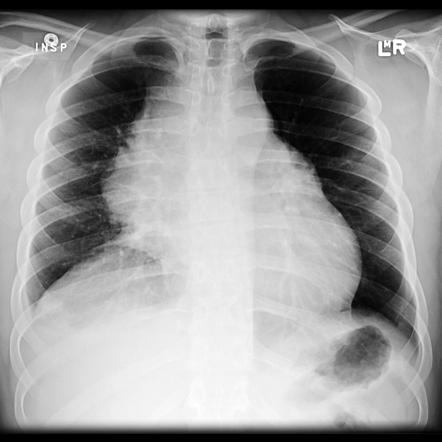Primary mediastinal large B-cell lymphoma (PMBCL) is an aggressive subtype of diffuse large B-cell lymphoma (DLBCL), distinguished by its origin in the thymic (anterior) mediastinum and unique clinical and biological features. Though it accounts for approximately 2–4% of all non-Hodgkin lymphomas, it is a critical entity due to its distinct pathology, treatment requirements, and demographic preferences—most commonly affecting young adult women.

Epidemiology and Pathogenesis of PMBCL
Prevalence and Demographics
PMBCL primarily affects individuals between 20–40 years of age, with a notable female predominance. It is rare in children and older adults, and its incidence is slightly higher in Western countries.
Origin and Molecular Characteristics
PMBCL originates from thymic medullary B cells and shares overlapping gene expression profiles with classical Hodgkin lymphoma (cHL), particularly the nodular sclerosis subtype. Genetic features include:
- Amplification of chromosome 9p24.1
- Increased expression of PD-L1 and PD-L2
- Constitutive activation of the JAK-STAT signaling pathway
These findings inform both diagnostic approaches and targeted therapy considerations.
Clinical Presentation and Diagnostic Workup
Common Symptoms
- Rapidly enlarging mediastinal mass
- Dyspnea, cough, or chest pain due to compression of mediastinal structures
- Superior vena cava syndrome
- B symptoms: fever, night sweats, weight loss (in a minority)
Diagnostic Strategy
- Imaging: Chest CT and PET-CT for assessing tumor size, involvement, and staging
- Biopsy: Core needle or surgical excisional biopsy for histopathological confirmation
- Immunophenotyping: Positive for CD19, CD20, CD79a, BCL6; negative for CD10, with variable MUM1 expression
- Molecular Testing: Evaluation of 9p24.1 alterations and PD-L1/PD-L2 overexpression
Histopathological Features
Microscopic Examination
- Diffuse growth of large atypical lymphoid cells
- Clear cytoplasm and compartmentalizing sclerosis
- Cells with prominent nucleoli and moderate to abundant cytoplasm
Immunohistochemistry Profile
- Positive: CD20, CD30 (weak), BCL6
- Negative: CD10, ALK, Epstein-Barr virus (EBER in situ hybridization)
Staging and Prognosis
Ann Arbor Staging
Most patients present with stage I or II disease, confined to the mediastinum and contiguous lymph nodes.
Prognostic Indicators
- International Prognostic Index (IPI) score
- Tumor bulk and presence of B symptoms
- PET-CT Deauville score post-therapy
- Early metabolic response is a critical predictor of progression-free survival
Treatment Strategies for PMBCL
Frontline Chemotherapy
DA-EPOCH-R (dose-adjusted etoposide, prednisone, vincristine, cyclophosphamide, doxorubicin + rituximab) is the current gold standard. It offers high efficacy with reduced need for radiation.
Alternative Regimens
- R-CHOP (less favored due to higher relapse rates)
- R-MACOP-B in selected institutions
Role of Radiation Therapy
- Considered for residual mass or incomplete metabolic response on post-treatment PET
- Increasingly avoided in patients achieving complete remission with chemotherapy alone
Emerging Targeted Therapies
- Immune checkpoint inhibitors: Nivolumab and pembrolizumab in refractory cases with PD-L1 overexpression
- CAR T-cell therapy: Investigational for relapsed/refractory disease
- Brentuximab vedotin: Considered in cases with strong CD30 expression
Management of Relapsed or Refractory PMBCL
Salvage Chemotherapy and Transplantation
- Platinum-based regimens (ICE, DHAP)
- Autologous stem cell transplant for eligible patients
Novel Agents Under Study
- Anti-PD-1/PD-L1 therapies
- Bispecific antibodies (e.g., mosunetuzumab)
- JAK inhibitors targeting the JAK-STAT pathway
Follow-Up and Long-Term Care
Monitoring
- Routine PET-CT scans post-treatment
- Regular bloodwork and physical examination
- Monitoring for late toxicities (e.g., cardiac or endocrine complications from therapy)
Survivorship Considerations
- Psychosocial support for young survivors
- Fertility preservation discussions prior to therapy
- Cardiovascular risk mitigation post-anthracycline exposure
Primary mediastinal large B-cell lymphoma is a biologically distinct and highly curable lymphoma when diagnosed early and treated with modern regimens such as DA-EPOCH-R. Continued advancements in targeted and immune therapies are reshaping the landscape of refractory PMBCL, providing new hope for patients beyond frontline treatment. Clinicians must remain vigilant in timely diagnosis, evidence-based therapy selection, and survivorship planning to optimize patient outcomes.

